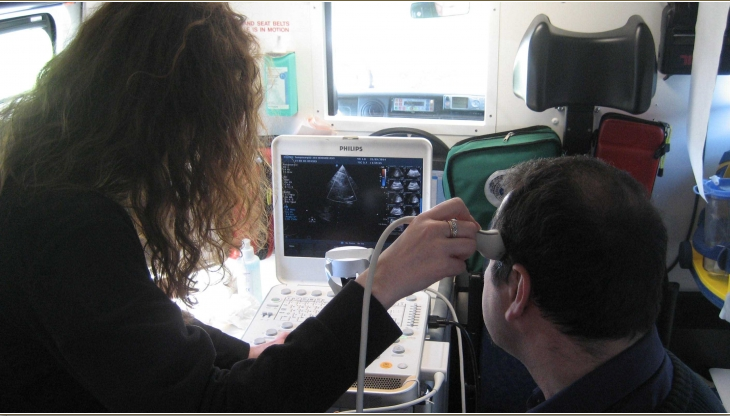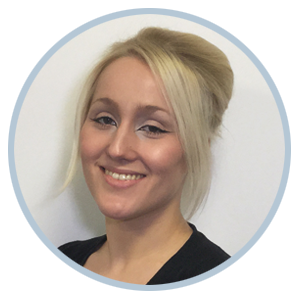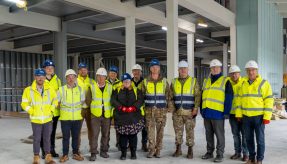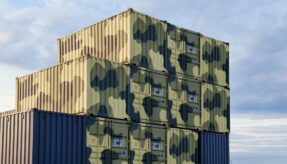
Portable ultrasound technology is available, affordable and adaptable. Once the tool of a medical professional, a project carried out by Aberdeen University is aiming to make brain scanning simpler for non-medically trained personnel.
MOD DCB features writer Domhnall Macinnes caught up with Dr Leila Eadie, Research Fellow at Aberdeen University, about how this technology could save soldiers’ lives.
In a recent edition of MOD DCB, we spoke with James Cameron, Head of Life Sciences at Highlands and Islands Enterprise, about, among other things, the Satellite Ultrasound for Rural Stroke (SURS) project. A research project carried out in partnership with Aberdeen University and other organisations, the study aimed to utilise satellite technology, aiding doctors and paramedics in rural areas to transmit images to hospital clinicians.
SURS led to a Defence Science and Technology Laboratory (Dstl) funded project, studying how to make transcranial ultrasound scanning available to soldiers in the field. The project has been funded through the Centre for Defence Enterprise (CDE) themed competition ‘Defence Medical Sciences’, to fund innovative science and technology to enhance medical care.
An extension of Dstl, the Centre for Defence Enterprise funds research on innovative project ideas. The projects sought after are those which can affordably improve defence capability. Providing themed competitions, webinars, networking events and case studies, CDE works with both industry and academia to help make innovative ideas a reality. SMEs are widely encouraged to get involved.

Dr Leila Eadie is a Research Fellow at Aberdeen University’s Centre for Rural Health, based in Inverness. Her professional background includes neuroscience, brain imaging, telemedicine and creating virtual models of parts of the body. She is the lead on the transcranial ultrasound scanning project, which could be adapted to aid paramedics in rural areas diagnose brain injuries and strokes.
The ultrasound support software is in its early stages, with the initial programme having been written, although clinical and volunteer testing has been carried out. Part of the testing was to gain feedback from both clinicians and novices – on its usability, its capability and the other features it can offer. The aim of the project is to support non-medically trained users on how to carry out comprehensive head scans, using portable ultrasound machinery.
Dr Eadie explained how the software works: “There is a movement tracker attached to the ultrasound probe which lets us know where the probe is pointing. We scan through two bone windows in the head where the bone is thinner. From this we know what points we’re scanning from; and if we know how the probe is moving, we can then track how the scan has covered the brain.
“This is displayed for the person doing the scan on a 3D virtual head model; they can see the head being filled in with colour as the scan proceeds. The tracking is time-linked to the ultrasound we’re also recording, so we can link the two and tell what images were taken at what time and at what point through the head. Using this we can composite the images together to create a 3D image which could then potentially be transmitted to a hospital for experts to view and interpret and provide diagnoses from.”
She continued: “The second part of the work is providing a viewing platform or process. So instead of these two areas in the head that we scan through, we can access images from any point in the head we like.”

The value of this technology to the health of an injured soldier becomes more apparent when we begin to reflect on brain injury. One of the challenges in diagnosing traumatic brain injury lies in whether or not the injury is open or closed. An open head injury is blatant. Its visibility warns of a deeper-rooted issue in need of immediate attention.
A closed injury, however, is a hidden threat. On the battlefield, bleeding on the brain can go unnoticed, especially if the soldier has sustained more visible injuries that require immediate attention. Because CT and MRI scanners are not available on the battlefield or in an ambulance, head scanning must wait and can therefore sometimes be overlooked.
Dr Eadie remarked: “This ultrasound technology could really help bring diagnoses earlier in the process – you don’t have to wait until the patient gets to the hospital. Equally, it can prevent brain injury being overlooked altogether.
“Portable ultrasound technology is cheap and available. It can be used to examine different parts of the body. So really, what we’re doing here is expanding ultrasound use. Rather than creating a brand-new system, we’re enhancing a system that already exists.”
Indeed, portable ultrasound systems are available for purchase from a list of manufacturers. They tend to be a little larger in size than a laptop; however, tablet-based versions are also on sale and are engineered for portability.
Dr Eadie said: “My software works with this technology. At the moment it’s installed separately on a laptop, but there is potential in the future to work with ultrasound manufacturers to actually embed this within their programming.
“You could have a view of the ultrasound you’re taking and also perhaps a view of the head or different organ system altogether. But a view of the head showing you where you’ve scanned actually supports people who wouldn’t necessarily be using ultrasound otherwise. The technology allows them to take good images that could then be interpreted elsewhere.”
The software Dr Eadie is developing stems heavily from ultrasound technology operated within the health sector. Ultrasounds are not commonly purposed for head scanning because hospitals already have CT and MRI scanners. Dr Eadie is therefore utilising the software for the pre-hospital sphere of diagnosis influence. Nevertheless, it is an aspiration of Dr Eadie that this software will be fed back into the full health sector.
She concluded: “We’re also currently working on a project to install ultrasound machines in ambulances around the Scottish Highlands, helping people who live a long way from hospitals. We think this could be used by paramedics, and possibly even GPs in remote locations. At the moment we’re suggesting that our novice scanners get support from hospital-based experts. In the future, though, there’s potential to bring computer-aided diagnosis into this as well; that would be another step along in the technology’s progression.”
If you would like to join our community and read more articles like this then please click here
Aberdeen University Army Defence defense Dr Leila Eadie Land technology Medical MRI Research Fellow ultrasound technology








